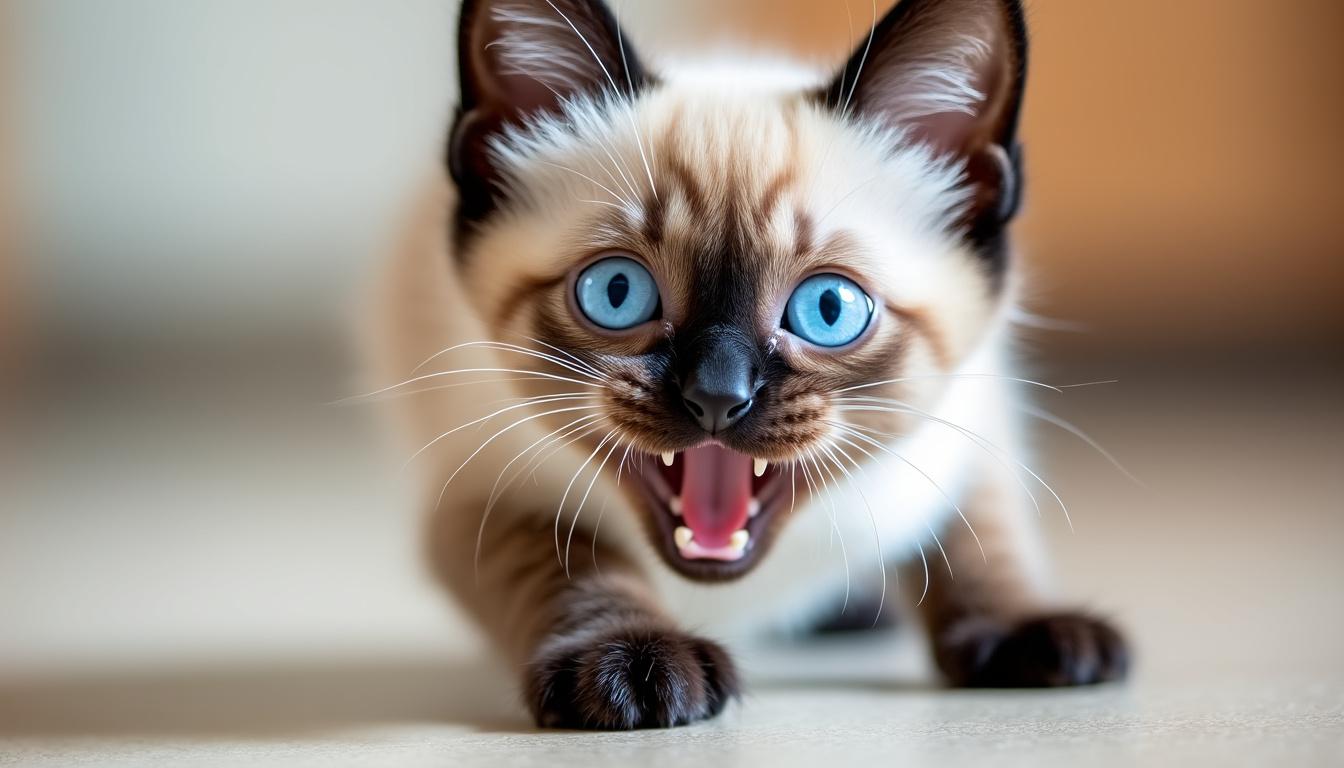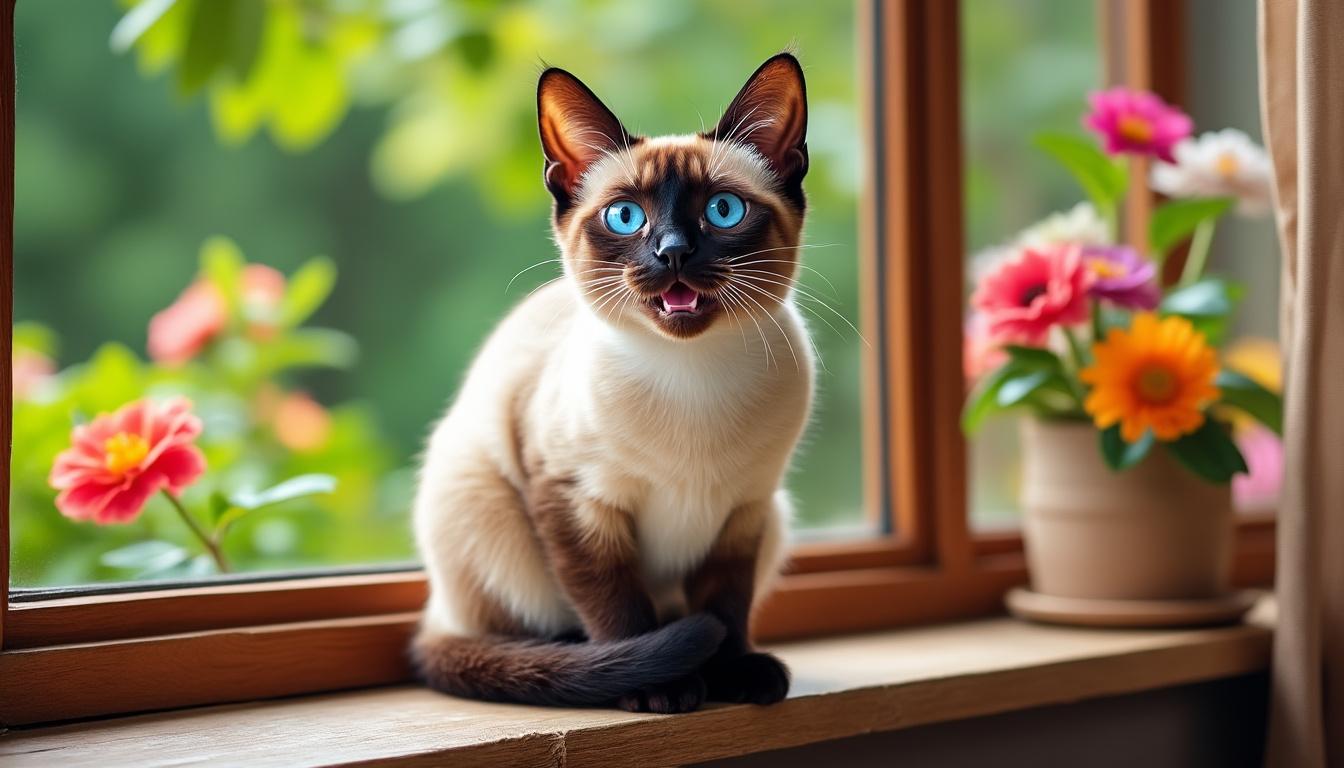When it comes to feline chatter, Siamese cats have carved a niche for themselves. Their distinct, melodic meows and boisterous vocalizations often leave owners intrigued and sometimes puzzled. But what is it about Siamese cats that makes them more talkative than their feline counterparts? It’s not just a quirk; it’s rooted in their history, genetics, and social nature. From their royal Thai heritage to the playful demands for food and attention, Siamese cats hold a reputation that warrants a closer look.
This article will explore the fascinating world of Siamese cat vocalizations, delving into aspects such as their history, communication methods, and what makes them stand out among other breeds. We will also examine the dynamics between their vocal habits and their relationships with human companions.
The Vibrant History of Siamese Cats and Their Vocal Reputation
To fully grasp why Siamese cats are so vocal, we must take a step back and look at their rich history. Originating from Thailand—once referred to as Siam—these cats were not merely pets but companions to royalty and monks. The way they lived and thrived in human environments significantly shaped their vocal behaviors.
Historically, Siamese cats were revered for their beauty and mystique. Their vocal nature was recognized as part of their charm. It is said that their melodious meows were believed to ward off evil spirits in temples. This early association with humans helped reinforce their vocal tendencies, as they learned to communicate their needs effectively to their caretakers.
Key Factors Influencing Vocalization History:
- Royal Companionship: Siamese cats lived closely with humans, leading to a deep-rooted understanding of human communication. 🏰
- Spiritual Significance: Their vocalizations were once thought to have divine meanings, promoting interaction with humans. 😇
- Selective Breeding: Over time, breeders favored vocal specimens, cementing this trait in the lineage. 📈

The Unique Melody of Siamese Meows
Siamese cats possess a vocal repertoire that is both diverse and expressive. Unlike many other breeds, which may have a limited range of sounds, Siamese cats can produce a variety of vocalizations—each loaded with emotion. This ability allows them to communicate everything from hunger to companionship or just greeting their humans.
The distinctiveness of their meows ranges from a soft chirp to a wailing cry that can echo through rooms. This dramatic range is often compared to a conversation, emphasizing their desire for interaction. Interestingly, some owners even note that their Siamese develop personalized “languages” with specific sounds that cater to certain needs.
A Closer Look at Their Vocal Range:
| Sound Type | Description | Common Use |
|---|---|---|
| Meow | A standard vocalization, often demanding attention. | Hunger, greetings |
| Yowl | A loud and assertive call, often used when trying to get something across. | Displeasure, urgent need |
| Chirp | Short, joyful sounds, similar to birds. | Playfulness, excitement |
Ultimately, the ability of Siamese cats to vocalize extensively serves a practical purpose. They are not merely expressing themselves; they often seek specific responses from their owners. Their vocal tendencies are motivational—because once they meowed and received attention or food, they learned quickly to repeat that behavior. This symbiotic relationship has led to a deeper bond between Siamese cats and their humans.
The Role of Genetics in Siamese Cat Vocalizations
As fascinating as their historical context may be, the idea that vocalization is primarily a genetic trait also merits closer inspection. Recent studies suggest that Siamese cats have more genes linked to vocalization than other breeds, which might explain their talkative tendencies. Breeders have unwittingly reinforced these traits over generations, leading to a higher incidence of vocalization within the breed.
But genetics isn’t the sole factor; environmental influences play an equally significant role. The behaviors and habits developed in kittenhood can shape how vocal a cat becomes as an adult. Siamese kittens, particularly, learn to meow effectively from their mothers and littermates, using vocalizations to communicate and seek attention.
Genetic Factors Influencing Vocalization:
- Inherited Vocal Genes: Breeds exhibiting higher vocalization traits, including some select traits in Siamese cats. 🧬
- Neuroticism: Higher levels of nervousness linked to stronger vocalization tendencies may appear in genetically predisposed individuals. 🌪️
- Socialization: Early interactions reinforced by human companionship contribute further to vocal behaviors. 👩👦

Environment: A Catalyst for Vocalization
The environment in which a Siamese cat grows up can significantly impact its vocalization habits. Those who thrive in bustling, interactive households often develop more extensive vocal habits, as they’re encouraged to communicate and engage more actively with their human companions. On the other hand, a quiet, lonely environment could trigger excessive meowing due to attention-seeking behaviors.
For instance, if a Siamese cat is left alone for long periods, it may meow more frequently due to loneliness or boredom. Owners can help manage this by making their homes stimulating with toys, climbing structures, and playtime. It keeps their minds occupied and reduces the need to be vocal for attention.
Environmental Influences on Vocalization:
| Factor | Impact on Vocalization |
|---|---|
| Household Activity Level | High activity promotes vocal engagement; low activity breeds boredom. 🏡 |
| Presence of Other Pets | Interactions with other pets can either suppress or amplify vocalization. 🐾 |
| Owner Interaction | More interaction leads to more vocalized requests and communication. 🗣️ |
The Importance of Understanding Feline Communication
Understanding the nuances of cat communication, particularly for a vocal breed like the Siamese, is critical for building a successful and fulfilling relationship between owner and pet. Listening to a Siamese cat can offer insights into their emotions, needs, and desires. For example, they may vocalize differently when hungry as opposed to when they want to play.
This level of communication goes beyond simple meowing. It creates a bond that forms through deliberative interactions. Learning to respond to a Siamese’s various sounds can help owners meet their needs more effectively and foster a loving environment. It can be rewarding and enriching, but it requires patience and attention.
Benefits of Understanding Their Communication:
- Enhanced Bond: Responding accurately to vocalizations increases trust and strengthens the human-animal bond. ❤️
- Better Care: Meeting their needs promptly based on vocal cues helps improve overall well-being. 🩺
- Reduced Anxiety: Understanding when a Siamese is feeling stressed can lead to improved mental health for the pet. 🌈
Practical Approaches to Managing Excessive Vocalization
While talkative cats can brighten a home, there can be moments when their vocalizations transform into excessive meowing. Owners may find themselves in situations where a cat’s constant chatter becomes overwhelming. In these cases, it’s crucial to differentiate between normal vocalization and potentially harmful excessive behaviors.
Some common triggers for excessive meowing might include health issues, boredom, or anxiety. Owners should be vigilant, keeping an eye out for changes in vocalization patterns. Providing ample stimulating activities, interactive toys, and keeping their environments engaging are excellent strategies to help channel that vocal energy positively.
Strategies for Addressing Excess Vocalization:
| Strategy | Description |
|---|---|
| Interactive Activities | Offer diverse play options to keep them engaged, reducing the urge to vocalize excessively. 🎉 |
| Health Check | Consult a veterinarian if there’s a sudden change, as it might indicate health issues. 🩺 |
| Training Techniques | Use positive reinforcement; reward quiet behavior and avoid responding to excessive meowing. 🎖️ |
Frequently Asked Questions
Why do Siamese cats meow so much?
Siamese cats meow frequently to communicate their needs, whether it’s for food, attention, or companionship. Their vocalizations have evolved as a way to engage with their human counterparts.
Are all Siamese cats equally vocal?
Not necessarily. While Siamese cats are generally more vocal than other breeds, individual personalities greatly influence how much they meow.
Can I train my Siamese cat to meow less?
Yes, with patience and positive reinforcement, you can encourage quieter behavior. Reward them for silence and avoid reinforcing excessive meowing.
What should I do if my Siamese is excessively vocalizing?
Monitor the behavior closely; ensure they’re not bored, anxious, or unwell. Engage them in play, and if the issue persists, consult a vet.
How can I reduce my Siamese cat’s meowing at night?
Provide them with interactive toys to keep them busy before bedtime and ensure they have ample playtime during the day.

